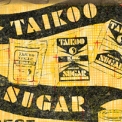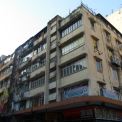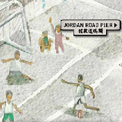Background
Imperial Preference was conceived as a measure to create a special trade zone within the British Empire by giving preference to goods produced in British territories while levying duties on foreign goods. Canada made the first move in 1897 by granting preference to British goods, and other Dominions followed suit during the following decade. However, committed to the principle of free trade, Britain did not grant any preference until the dumping of goods in the empire by Germany and others prompted it to take action. In 1917, Britain introduced import duties and granted preference to certain colonial goods.
Widespread Protectionism under World Depression
The world depression further moved Britain to impose a general duty of 10% ad valorem on all imports in 1931 and exemption was given to colonial goods provided they had a 25% “empire content”. The Imperial Economic Conference in Ottawa in 1932 adopted a system of reciprocal Imperial Preferences. At first the effect of Imperial Preference on Hong Kong was only limited. Canada granted preference to Britain and many colonies but not to Hong Kong on the grounds that goods from China might be shipped through Hong Kong’s open port fraudulently. Consequently, Hong Kong’s exports of cement and refined sugar were taxed at the highest rate and soon lost their market in Canada. But Canada was a relatively small market.
The Operation of Imperial Preference
The full impact of the system only came after 1932. Regulations became increasingly stringent. In 1933, most manufactured goods were required to show 50% “empire content” (i.e. raw materials imported from the British Empire and work processes done in the Empire) in order to qualify for preference. Requirements for proving content also became increasingly burdensome. Complicated arrangements for certification of content origin were set down by the British Customs. Hong Kong manufacturers had to register with the Import and Export Department and to have their account books managed by chartered accountants.
The Impact upon Hong Kong Products
The impact of the system was uneven. It initially encouraged the export of Hong Kong-made rubber shoes and shirts, singlets and hosiery to Britain and other British territories because Japanese goods were heavily taxed. Rubber and canvas shoes easily exceeded the required 50% “empire content” as the rubber came almost wholly from Malaya and canvas from Britain. Hong Kong exported about 2.5 million pairs of canvas and rubbers shoes to Britain alone in 1935 and over 7 million pairs in 1938. Other industries that were boosted by the preferential import taxes were electric torches and batteries.
Imperial Preference posed much problem to Hong Kong’s textile industry because it used to employ high percentage of non-Empire materials. In 1937, the British government ruled that woven cloth in the piece with cotton and artificial silk or mixtures had to be spun, woven and finished within the British Empire if the product was to be given preference. This required that raw materials used must be 100% British, including raw cotton which must be grown within the empire. Hong Kong manufacturers petitioned the British government, pointing out the difficulties involved; on the advice of the Chamber of Commerce, some of them agreed to use yarns from cotton mills in India rather than from China and Japan. For manufacturers of goods made from artificial silk, it meant using British-made rayon instead of Japanese artificial silk which would double the cost of production. In early 1940, Britain required certain classes of textile goods manufactured in Hong Kong, principally hosiery and shirts, to obtain import licences before shipment. Despite petitions from Hong Kong, the British government insisted that the articles had to be made exclusively with empire yarn.
The effect was also uneven in that Britain, the Dominions and colonies each gave preference to different items on different terms. Britain and Canada became alarmed that Hong Kong-made goods were competing with their own products. In 1939, attempts were made to limit the import of Hong Kong-made shoes to Britain; however no such regulations came into effect.
Hong Kong General Chamber of Commerce as Communication Agent
The Hong Kong General Chamber of Commerce played a big role in assisting manufacturers deal with matters related to Imperial Preference. It notified manufacturers of new regulations and the latest requirements of the British Customs. It represented Hong Kong manufacturers in their communications with the Hong Kong and British governments and advised Chinese manufacturers in particular on how to satisfy confusing and constantly changing instructions issued by the Customs. The work of the Chamber in this area is summarized in its Annual Report.
Document
- Textile Quotas Legislation (1937)
- Empire Quota for Textiles and Rayon Goods (1934)
- Quantities and Values of Principal Articles of Exports During the Years 1937 and 1938
- Percentage of Total Exports sent to Empire and Foreign Countries (1939)
- Imperial Preference (1932)
- Imperial Preference (1933)
- Increased China Import Duties (1934)
- Imperial Preference (1937)
- Imperial Preference (1938)





